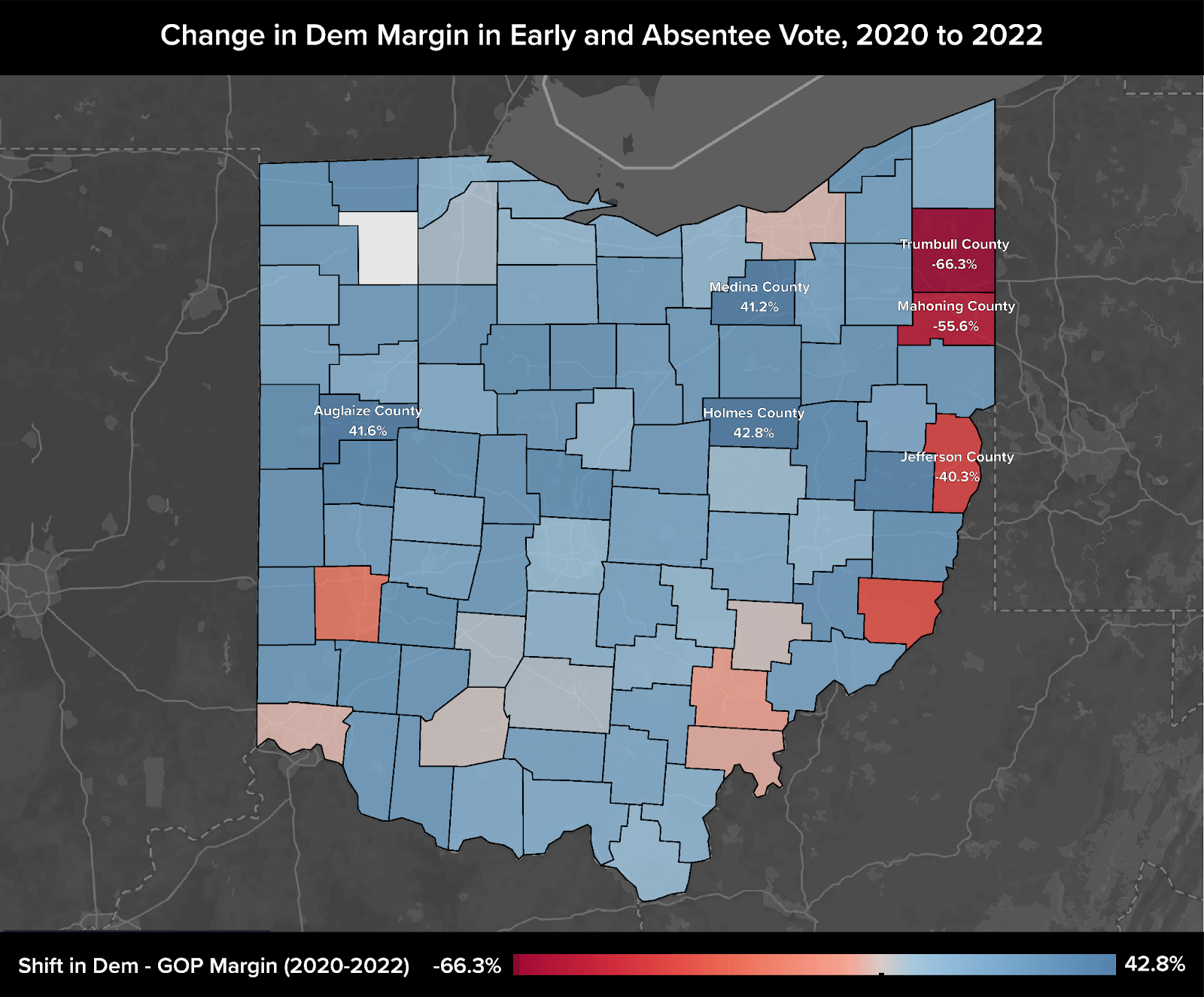Chip in Now to Stand Up for Working People
Working people need a voice more than ever and Working America is making that happen.
Working people need a voice more than ever and Working America is making that happen.
Matt Morrison
11/07/2022
Few states hold the place in our hearts that Ohio does.
The state, home to what many folks think is one of the most unexpected toss-up Senate races in the country, is where Working America got its start and built many of the organizing and analytics tools that shape our work today. That is one of the reasons we want to share how we have already won tens of thousands of additional Democratic votes from the early ballots, with more to come Election Day.
There are a million Working America members in Ohio. To borrow a phrase from our current President, we think Ohio is a BFD, and they feel the same about us.
But national Democrats have deprioritized the state in both presidential and midterm elections over recent years, resulting in some jarring losses. Trump ran up the score and made clear to many something we have known for a long time: Ohio is a reflection of Democrats’ struggles to connect with the working class.
But Tim Ryan, like Sherrod Brown and Barack Obama before him, is cut from a different cloth. He does not share in those struggles.


Tweet by Rep. Tim Ryan (D-OH), campaigning with Lee Saunders, President of AFSCME (to the right) and Fred Redmond, Secretary Treasurer of the AFL-CIO (far right)
We love that Ryan has always made working class voters central to his agenda, from his first days knocking on doors with one of our canvassers back in 2007 (the canvasser was Kevin Pape, who is now our National Political Director), to his time in Congress to this moment where he’s on the threshold of entering the U.S. Senate.
These are issues that resonate in Ohio, where voters tend to be focused more on concepts like education, community, assistance and forgiveness as well as issues core to the local economy like agriculture and farming. Those words featured far more often than some of the GOP attack line issues crime and inflation, based on responses we received to the open-ended questions we sent to 159,342 Ohio residents via text message this year. Although immigration, emphasized by national Republicans, and health care, a key message of national Democrats, were also high in voters’ minds.


(Click here to learn more about how we use this type of direct feedback to shape our programs.)
But let’s be real. We have had our hearts broken by Ohio elections before. (In 2020 it looked like Joe Biden was really in the hunt.) And the recent polling has shown Republican Senate candidate J.D. Vance opening up a 2.3- point lead, which is not a good sign.
But the polls are also far from the complete picture. While we won’t let ourselves become hopeful, we do see that the race is not so clear cut when we look at other measures.
Take for example the early vote data, and specifically how it has changed since 2020. To study how the electorate is taking shape, we looked at how voters who have cast early votes break down when modeled by party. These voter partisanship models, while not as precise as knowing which candidate won that vote, are useful indices to see the pattern. The share of the early vote coming from modeled Democrats versus modeled Republicans has shifted 9.4 points in favor of Democrats since 2020. If we compare early turnout to the last midterm in 2018, we see that Democratic turnout has increased by 4,213 votes and GOP turnout down by 66,134 votes. Certainly part of the drop in Republican share may be attributable to the skepticism Donald Trump and others have encouraged towards the validity of early voting, but still the breadth of this pattern is striking.


In 72 of Ohio’s 88 counties the early vote make up has shifted towards modeled Democrats, most sharply in smaller rural and exurban counties.
But in 10 counties the make-up of early voters has shifted towards modeled Republican voters, including large Democratic counties like Cuyahoga by -1.8 points (Cleveland) and Hamilton -2.4 points (Cincinnati). But those aren’t nearly as dramatic as Trumbull county, which appear in the data to have moved 66.3 points towards Republican voters, and Mahoning, Ryan’s home county, which shifted 55.6 points Republican. In 2020, Ryan won about 3 points of Trump’s vote share in Mahoning and 10 points of Trump vote share in Trumbull. So even if Ryan is winning some of these Republican voters, in all likelihood it is a small share.
Polling (and history) are not in our favor, but thus far the early vote is – meaning this race appears to be a legitimate nail biter. And while efforts like ours have already impacted the Democratic margin (more on that below), the much greater impact will show up in election day ballots.
To start, Ryan is running arguably the best race of any Senate Democrat in the country. Working America has been quietly building support for Ryan among our members and the millions of other Ohio voters we have been in contact with for years.
Using data from our randomized control trial (RCT) studies of our outreach we can assess the program’s impact on vote gain among the early voters since that impact is now already baked into the outcome. Early voters tend to be more frequent and politicized voters, and therefore often less persuadable than election day voters – hopefully implying that our outreach will be even more potent with those casting ballots Tuesday.
Based on the RCT data for these early voters, we estimate that Working America efforts have led to a net vote gain of 29,928 Ryan votes among the just over 1,078,000 early votes cast as of this writing. That amounts to about a 2.8 point shift toward Ryan among all early votes. Our strongest performing persuasion tactics thus far have been our Working America member email and digital communications, which have targeted 1 million Ohio Working America members, 78,000 of whom have already cast ballots. We estimate that among this early voting segment we have added 4.5 Ryan votes per 100 members (n=845, TE= 4.5pp, SE=0.028, p=0.11).
To be sure, the rate of vote gains will shift among Election Day voters compared to the early voters – some of the programs for the better and some for the worse. But in Ohio, where our impact is always among our strongest because of our scale and history with the voters, and in other close states where we are running large programs, the trend is towards substantial levels of vote gain for our candidates that wont be detected by pre-election polls because it occurs so close to the election.
We do not know if these efforts will be sufficient in this environment, but we are grateful to all of you who have helped make this work possible. Your time, resources, energies, and support are essential ingredients. Let’s hope, and work, for a successful Election Night.
See you on the doors,
Matt
We use cookies and other tracking technologies on our website. Examples of uses are to enable to improve your browsing experience on our website and show you content that is relevant to you.